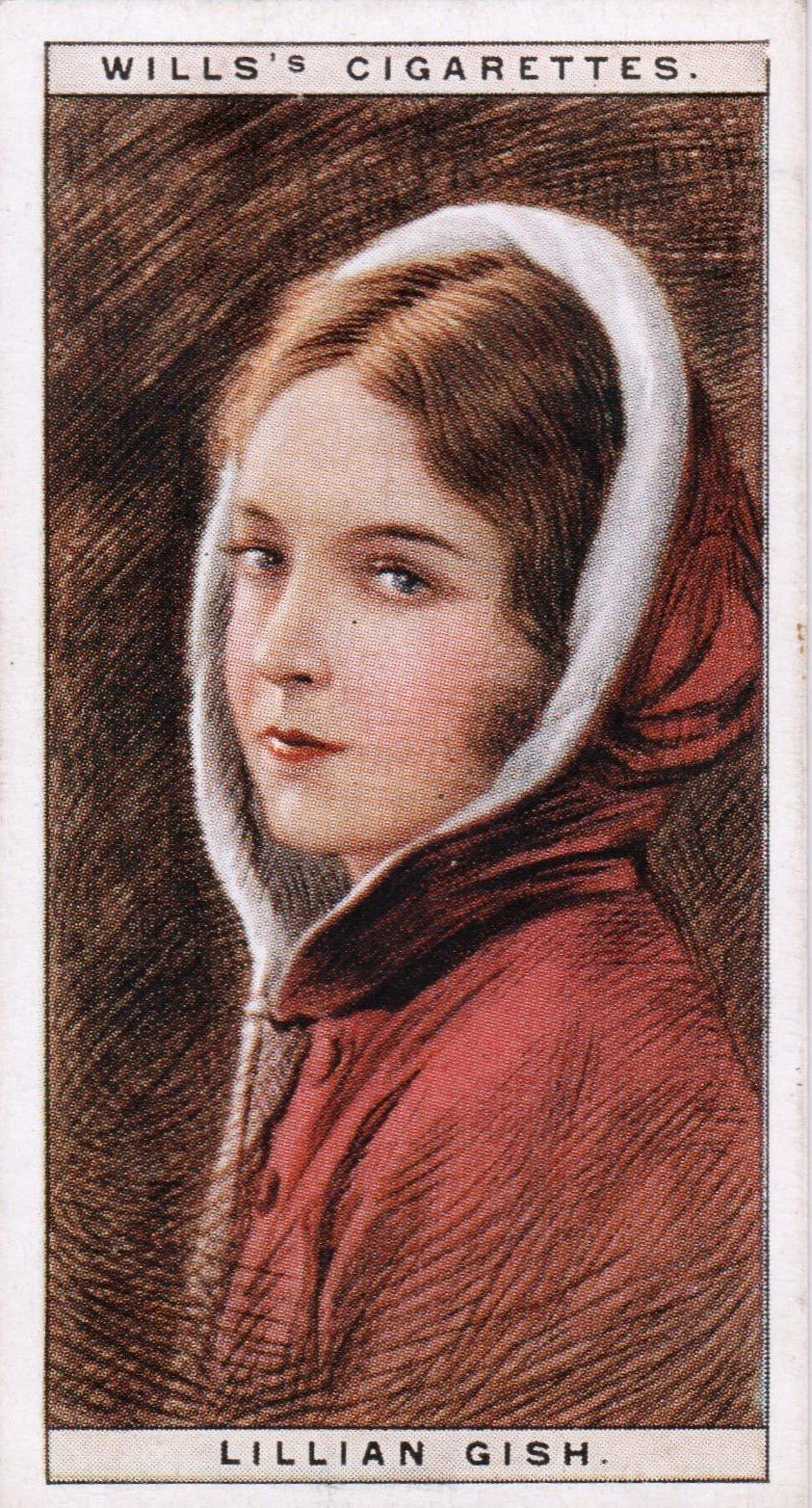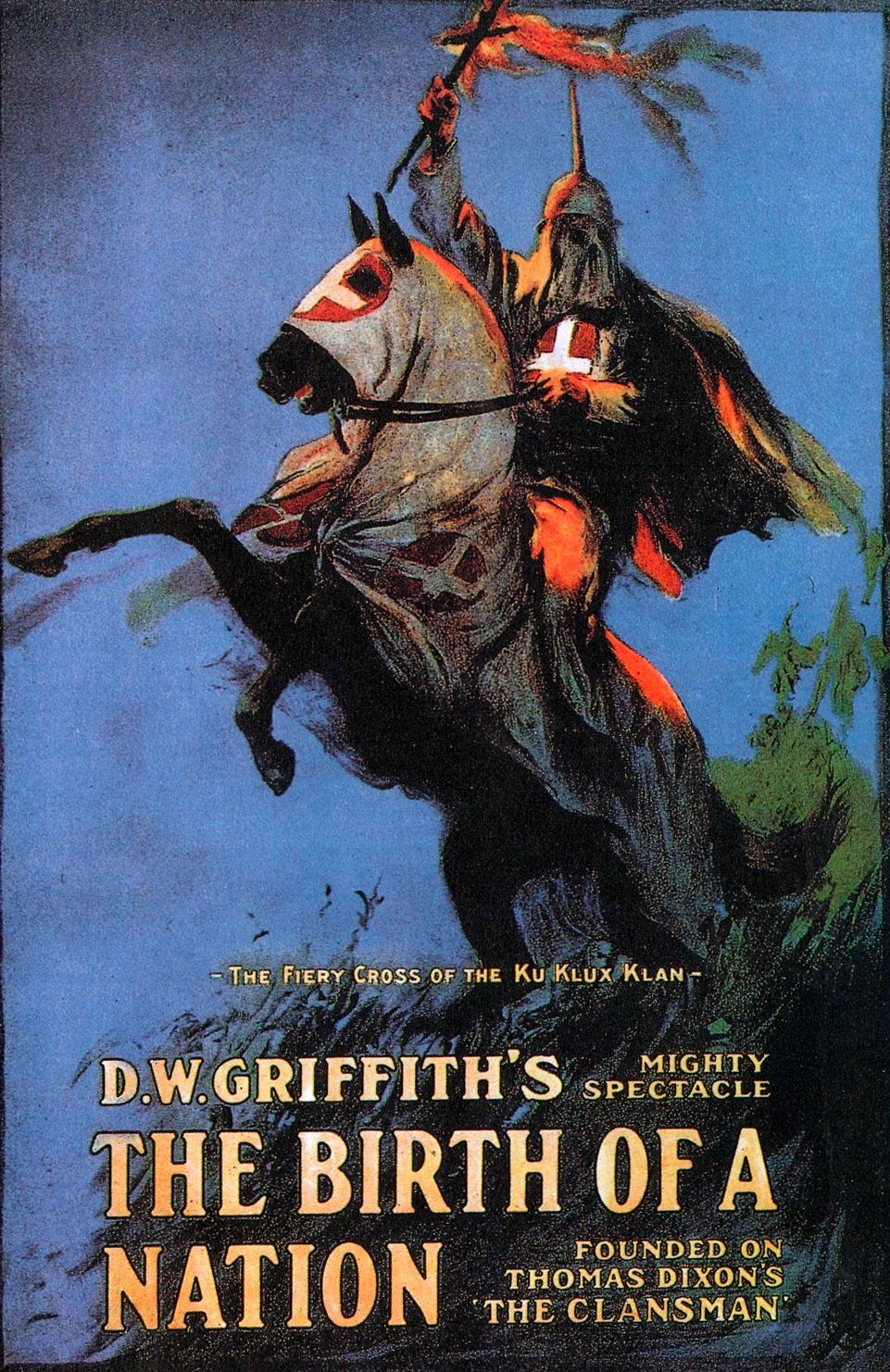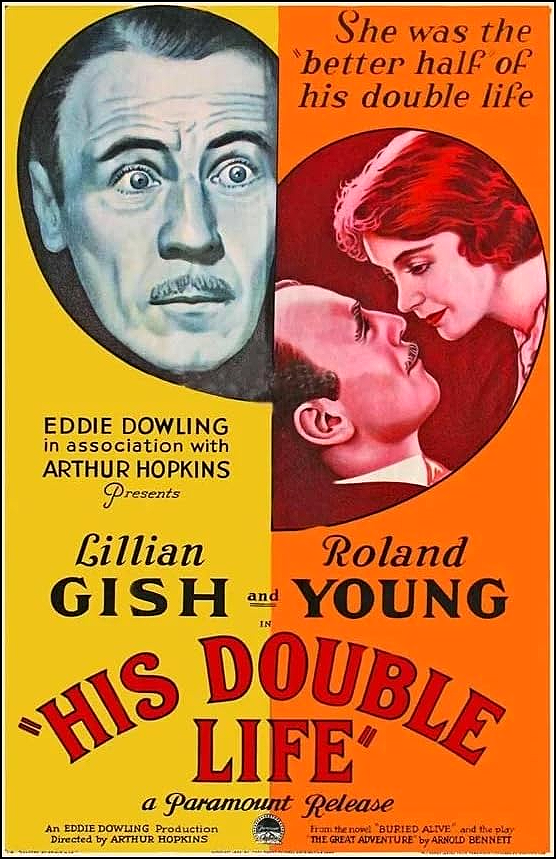LILLIAN GISH "First Lady of American Cinema"
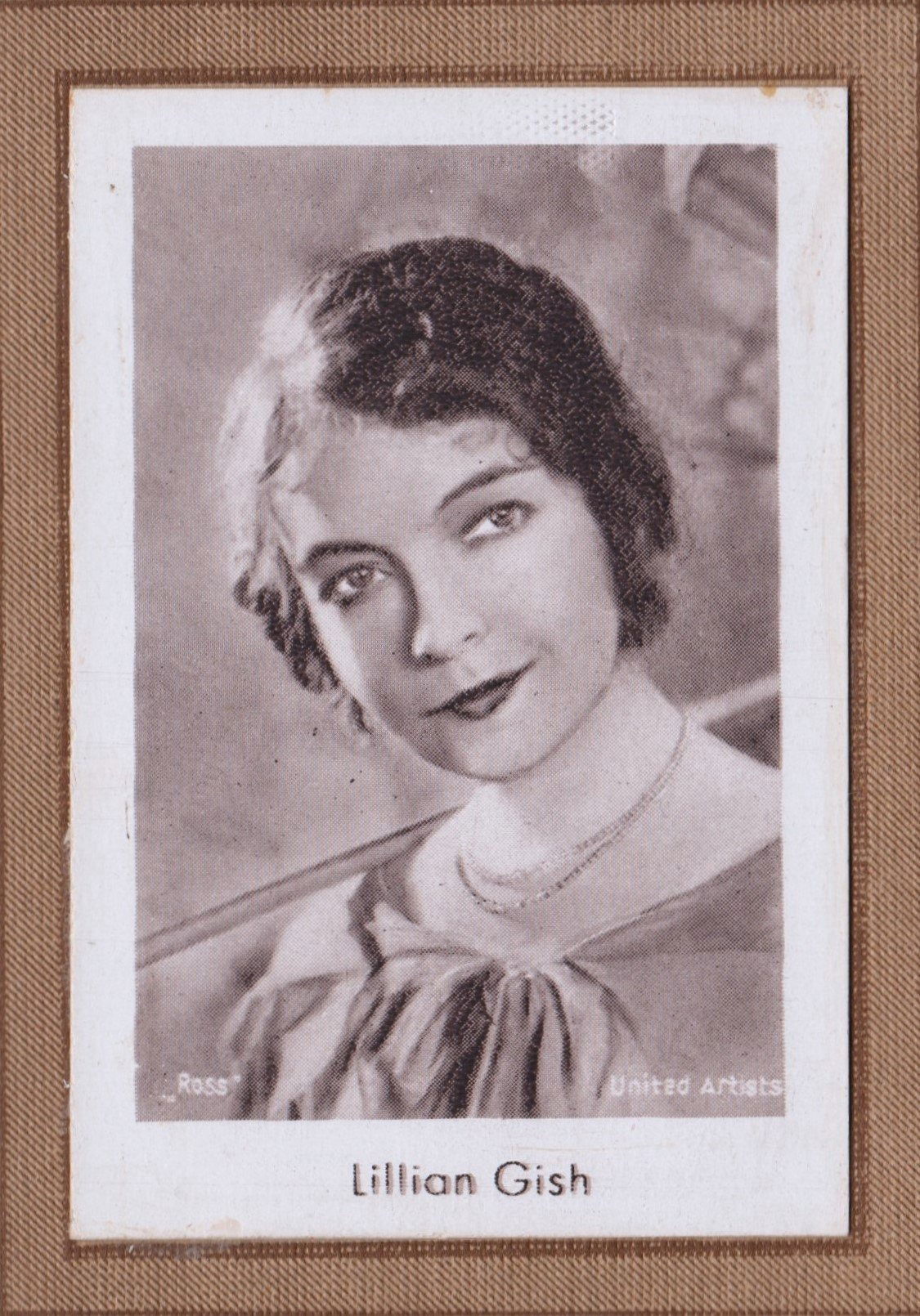

Card n.5 pag. 9 JOSETTI FILM ALBUM N°1
(personal collection)
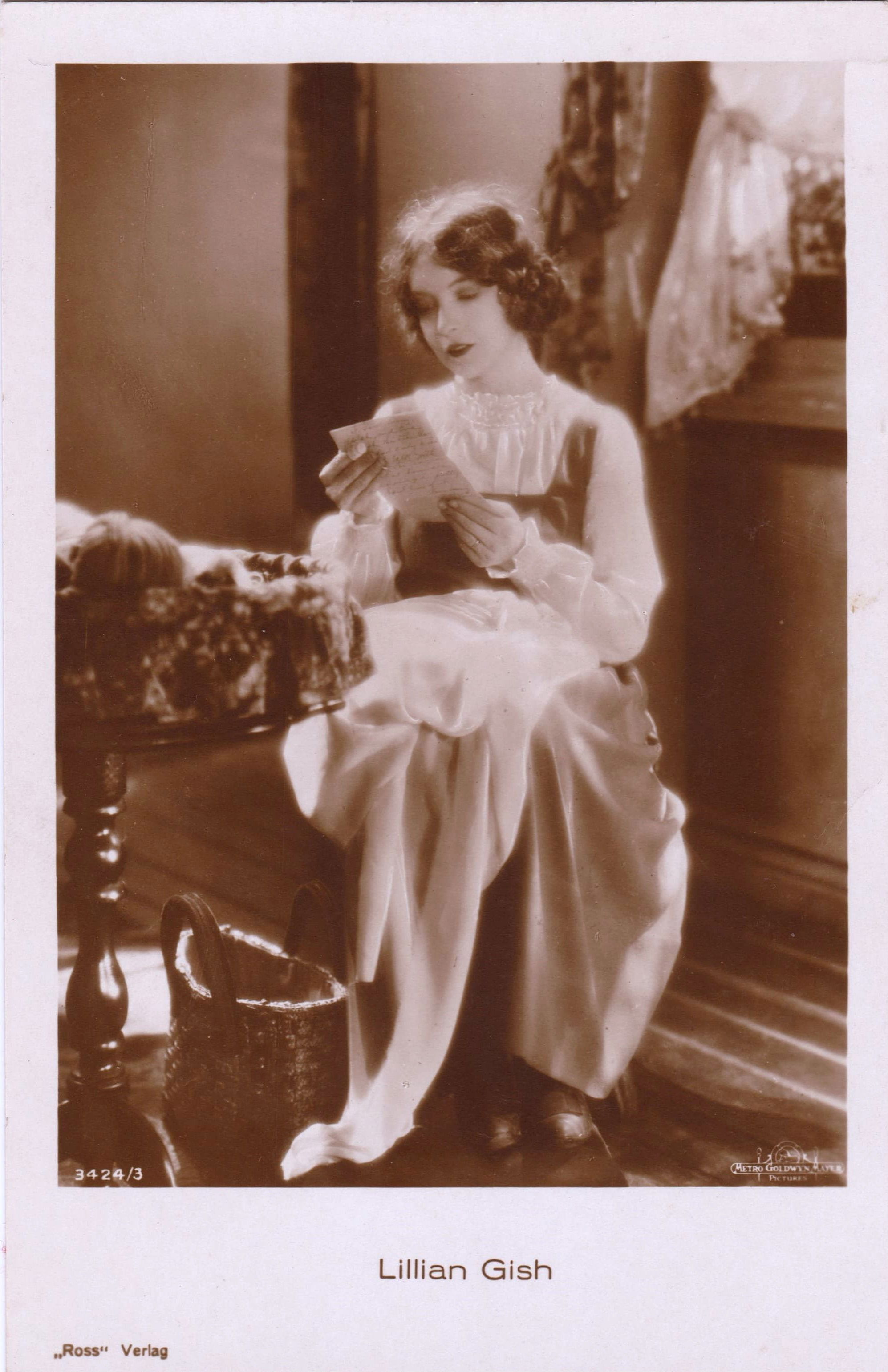
GERMAN POSTCARD ROSS VERLAG n° 3424/3
(personal collection)
"ICON OF SILENT CINEMA"
Lillian Gish emerges as an emblematic figure of silent cinema, an artist whose expressiveness transcended the need for sound dialogue. Her presence on screen was hypnotic, capturing the viewer's attention with the sheer force of her visual interpretations. At a time when written words were the only means of conveying dialogue, Gish proved that emotions and stories could be told through gestures, looks and the silent dance of facial expressions. His art was pure visual poetry, a universal language that spoke directly to the soul of the viewer.
Gish didn't just act; She lived her characters, bringing to the screen an emotional truth that few could match. Each role was a work of art, sculpted with the delicacy and precision of an artist who knew her craft intimately. His contribution to silent cinema is not just a matter of talent, but of innovation and artistic vision. He explored the depths of the human experience, transforming each scene into an emotional fresco that still speaks to the hearts of viewers today.
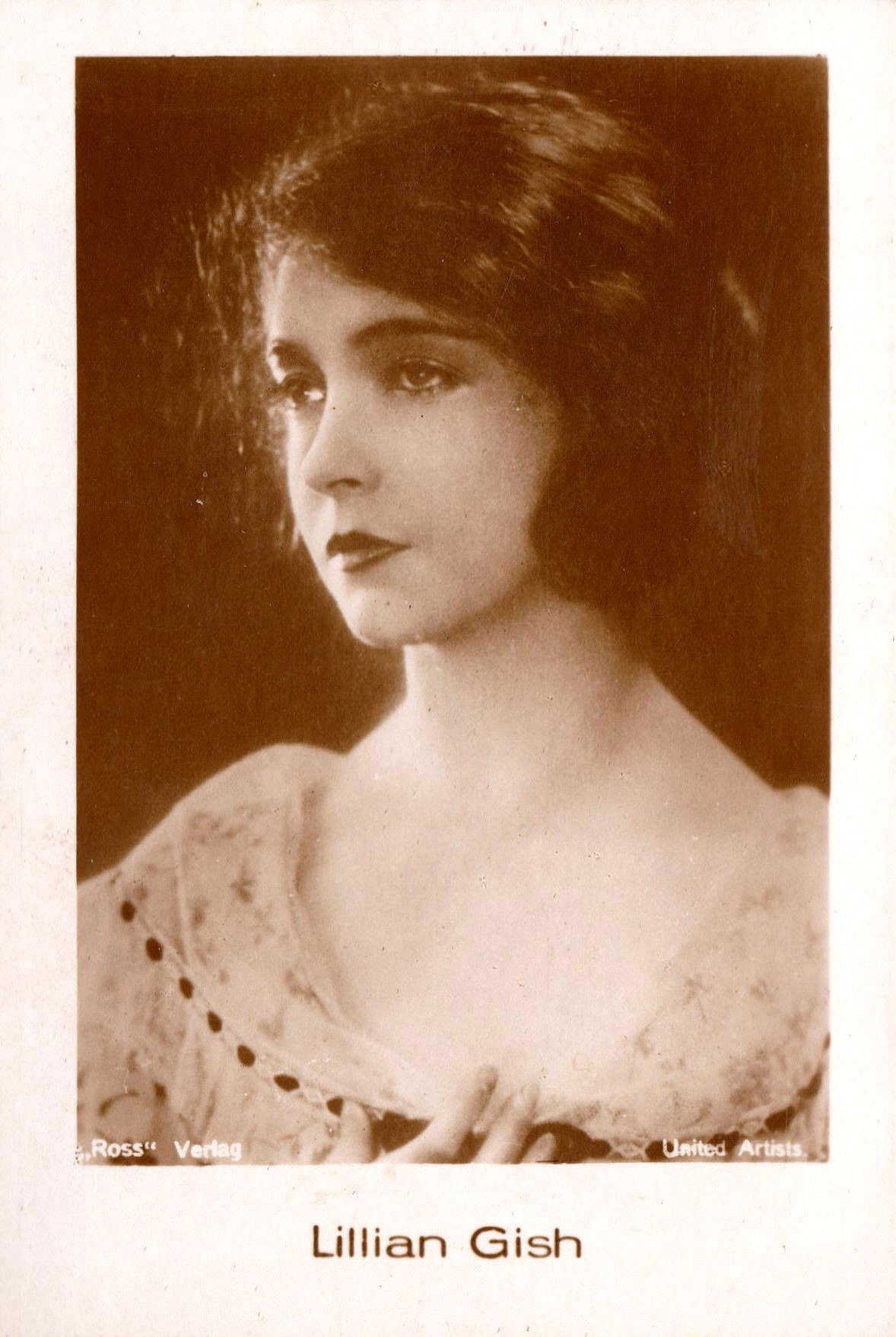
Card position 5 pag. 3 FILM KŰNSTLER AUS ALLER WELT
"APPROPRIATE"
(personal collection)

Throughout his career, Gish has left a legacy of inspiration for generations of actors and filmmakers. He showed that the strength of a performance does not lie in the quantity of words spoken, but in the intensity with which you can convey an emotion, a thought, a moment of truth. His art is a reminder that in film, as in life, what is not said can be just as powerful as what is openly expressed. Lillian Gish remains an eternal symbol of the power of cinema to move, touch and inspire without the need for a single word.
Card n.14 of the series ֍ CINEMA STARS 1ST SERIES
W.D. & H.O. WILLS (1928)
(personal collection)
Lillian Gish, born in the small town of Springfield, Ohio, left an indelible mark on the world of cinema as one of its first bright stars. His career began under the protective wing of the visionary D.W. Griffith, with whom he collaborated to create some of the most significant works of the silent film era. Through unforgettable roles such as Elsie Stoneman in "The Birth of a Nation" and Lucy Burrows in "Broken Blossoms," Gish has demonstrated an extraordinary ability to capture and convey complex emotions without uttering a single word, relying solely on the expressive power of her face and gestures.
His expressive, almost poetic nature elevated silent cinema to new artistic heights, showing that moving images could evoke feelings as deep as any literary work. Gish didn't just act; He also helped shape the language of cinema itself, experimenting with new techniques and modes of expression that have influenced generations of filmmakers. His career did not stop with the advent of sound; He continued to work, adapting and thriving even in this new environment, demonstrating a versatility and dedication to the craft that few could match.
Innovator, pioneer and icon, Lillian Gish has gone through decades of change in the world of cinema, leaving a legacy that transcends time. His contribution is not limited to the films he left behind; It has been a source of inspiration for those who see cinema as an art, a vehicle for storytelling and human expression. His influence endures, and his name remains synonymous with an era when cinema was just beginning to discover its limitless potential. Thanks to Lillian Gish, we can look back on those early days with admiration and respect, recognizing her pivotal role in defining what cinema has become today.
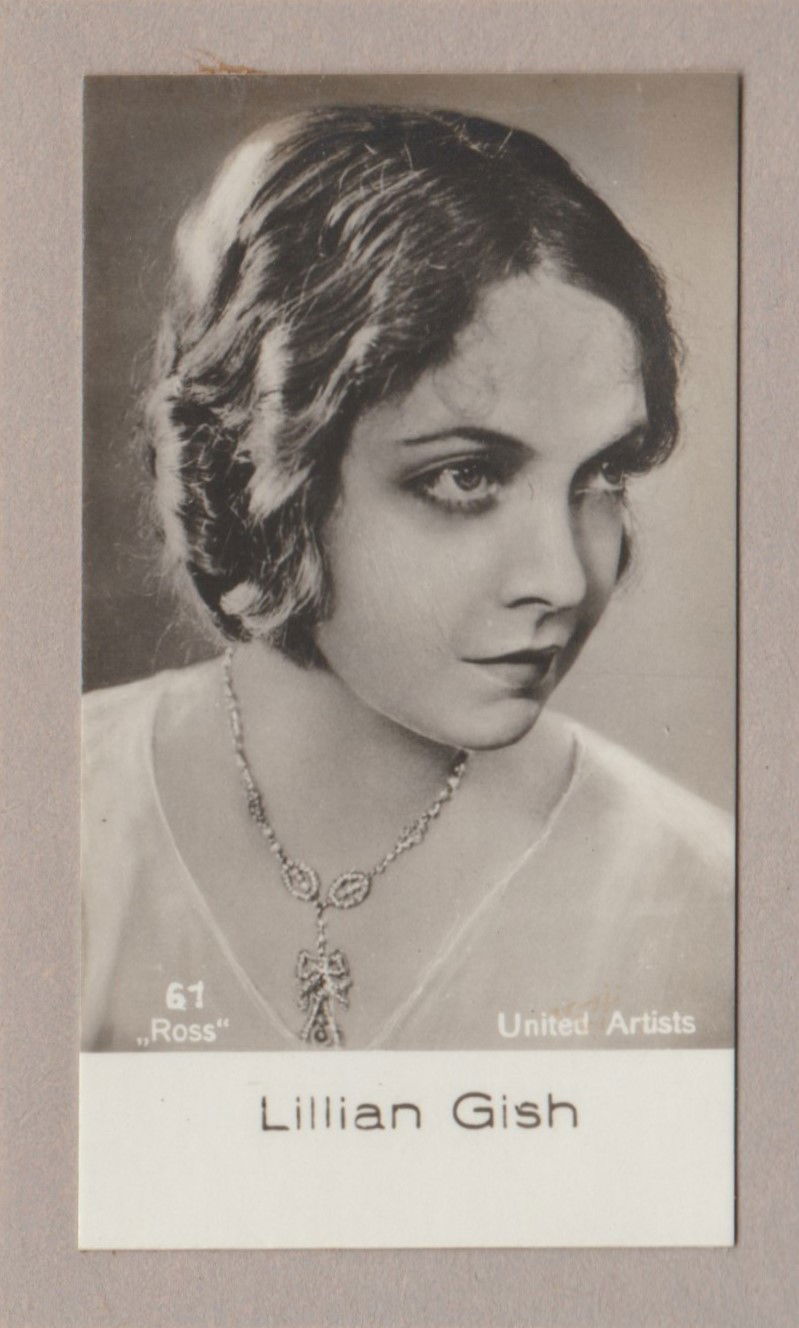
Card n.61 pag. 7 SALEM FILM BILDER
(personal collection)

The beginning of Lillian Gish's career under the direction of D.W. Griffith marked a fundamental era in the history of silent cinema. Their collaboration began in 1912, when Gish, along with his sister Dorothy, appeared in the short film "An Unseen Enemy". This film marked the debut of the Gish sisters in the world of cinema and was the beginning of a long and fruitful collaboration with Griffith. Lillian Gish quickly became one of Griffith's favorite actresses, starring in over 25 films in her first two years of film career. Their artistic partnership produced some of the most significant works of the time, including "The Birth of a Nation" from 1915, which despite the controversies related to its racist content, remains a benchmark for the innovative cinematic techniques it introduced. The Great Love" of 1918 is an American silent film of the war drama genre, which had the collaboration on the screenplay by Stanner E.V. Taylor under the pseudonym "Captain Victor Marier". The film, starring George Fawcett and Lillian Gish, is set during the First World War and the exterior scenes were shot in England. Interestingly, "The Great Love" is considered a lost film, and included footage of high-ranking British characters who contributed to the war effort, such as Queen Alexandra and Sir Frederick Treves.
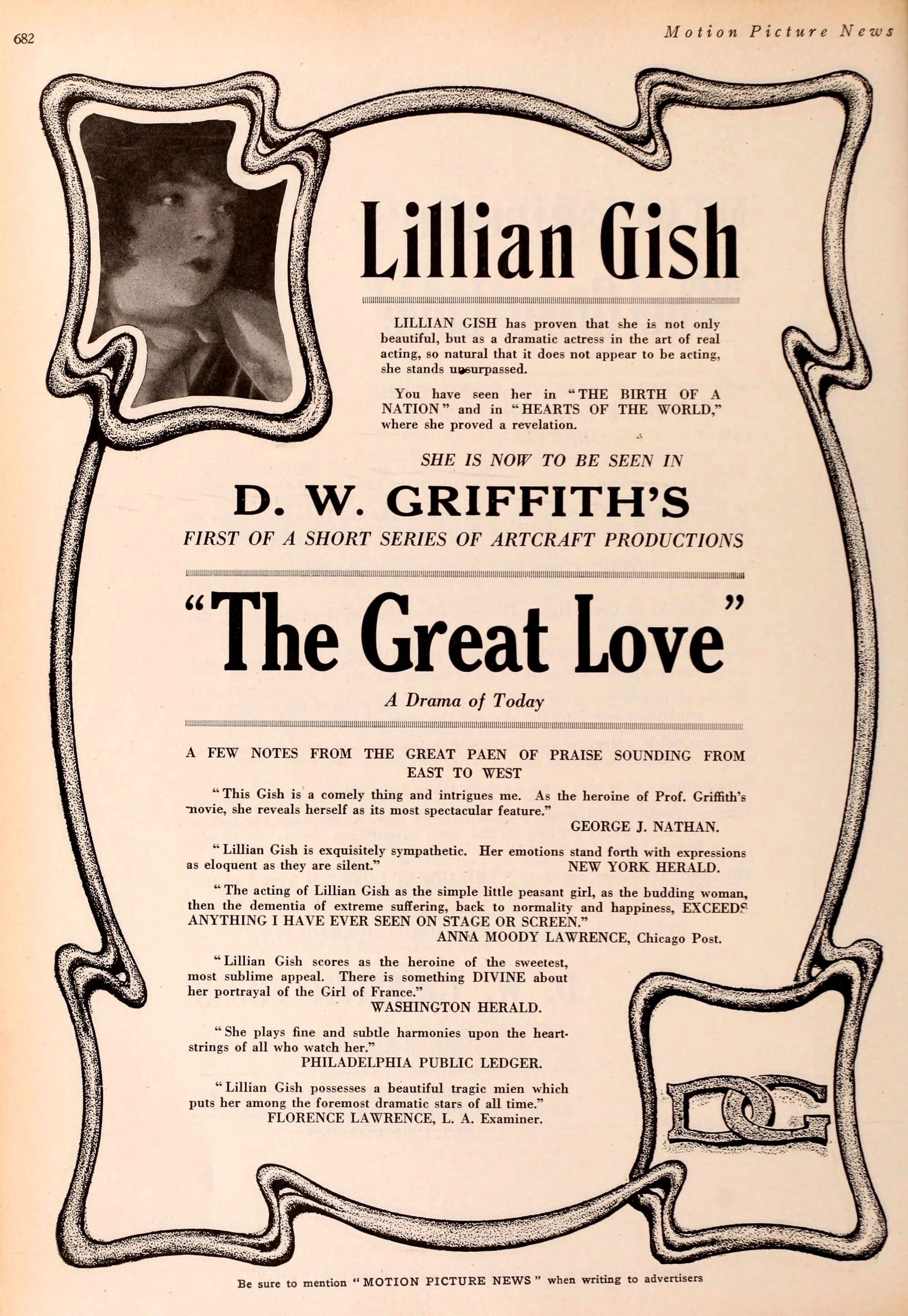
"Courtesy of the Media History Digital Library"
page no. 682 of the Periodical MOTION PICTURE NEWS (July-Aug 1918)
Other masterpieces followed, such as "Intolerance" in 1916, "Broken Blossoms" in 1919, "Way Down East" in 1920 and "Orphans of the Storm" in 1921, films that consolidated Gish's fame as the "First Lady of American Cinema" and a pioneer of film acting techniques. Gish was also one of Hollywood's first directors, directing her sister Dorothy in the film "Remodeling Her Husband" in 1920. Despite her brief experience behind the camera, Lillian Gish remained a central figure in front of the camera, leaving an indelible mark on silent cinema and contributing to its artistic and technical evolution.
" From Silent to Sound and Beyond "
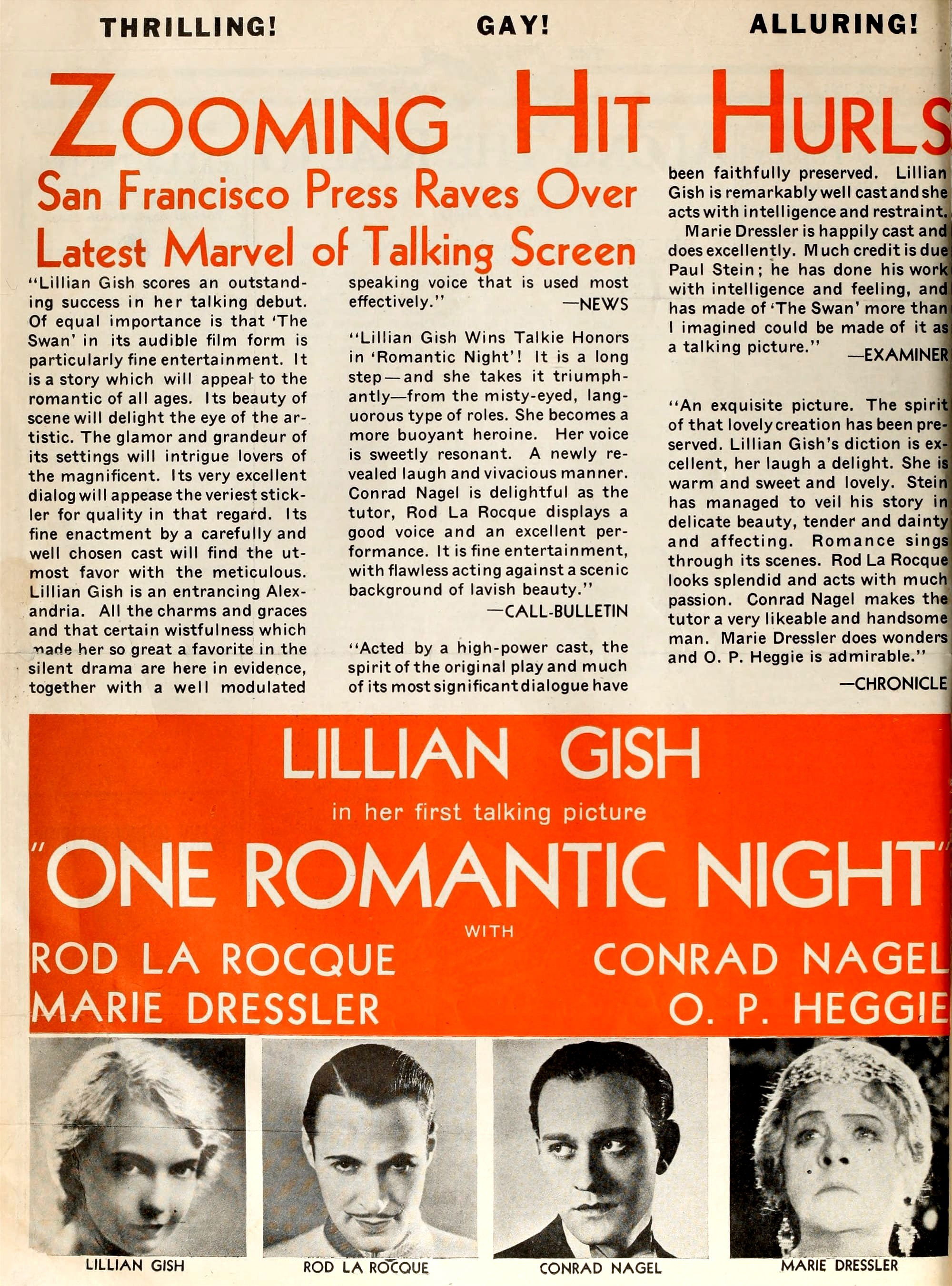
"Courtesy of the Media History Digital Library"
Periodico The Film Daily (Jan-Jun 1930)
" Last wonder of the talking screen "Lillian Gish achieves exceptional success in her spoken word debut".
Lillian Gish, an icon of silent cinema, made her debut in sound cinema with "One Romantic Night" in 1930. This film represented a milestone in his career, marking the transition from one era of the film industry to another. Gish, who had already conquered audiences with his performances in "The Birth of a Nation" and "Orphans of the Storm", faced the challenge of sound while maintaining the same elegance and craftsmanship that had distinguished her in silent films. "One Romantic Night", an adaptation of the play "The Swan" by Ferenc Molnár, starred Gish in the role of Princess Alexandra, a performance that demonstrated her versatility and talent for adapting to new technologies in cinema. Despite his success, Gish found a refuge in the theater for his expressiveness, dedicating himself passionately to theatrical acting in the 30s. His transition to sound cinema was not a farewell to silent cinema; in fact, in 1975, Gish celebrated the genre that had made her famous with "The Silent Years", a television program that paid homage to silent films. His vision of film as an art form capable of overcoming language barriers and bringing people together was clearly reflected in his contribution to the 1929 Encyclopedia Britannica. Lillian Gish remains an emblematic figure, whose career spanned two fundamental eras of cinema, demonstrating that the art of visual storytelling knows no boundaries or temporal limits.
THE INDELIBLE MARK
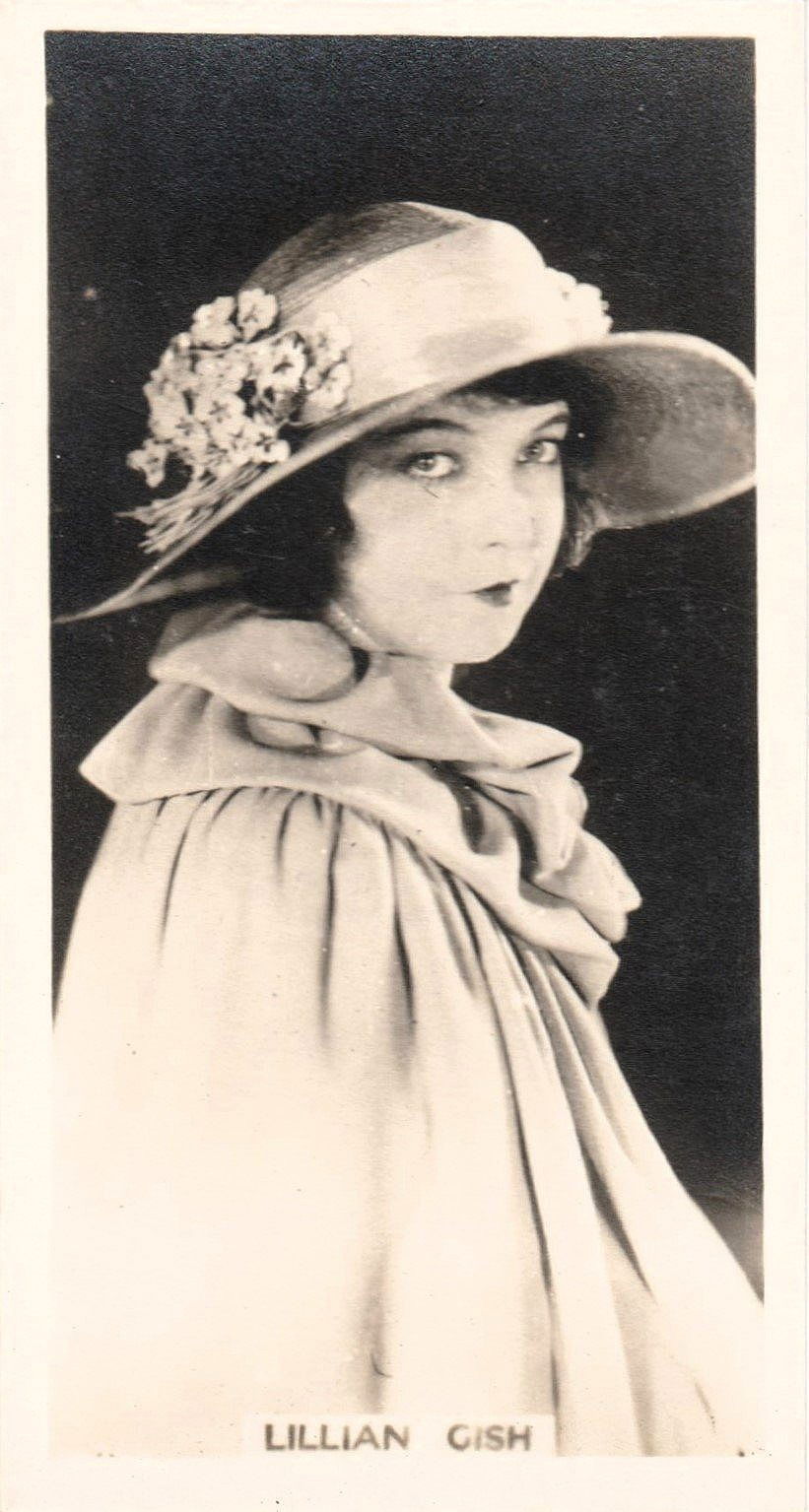
Card No.11 of the ֍ Cinema Stars series printed by ROTHMANS in 1925
(personal collection)
Lillian Gish, often referred to as the "first lady of American cinema," has left behind a priceless legacy in the world of film. With a career spanning over seven decades, Gish has embodied the essence of the silent actress, bringing grace, strength, and unprecedented emotional depth to her roles. His ability to convey complex emotions without the use of his voice redefined acting techniques and set new standards for film performance. His influence extends far beyond silent films, demonstrating a versatility and dedication to art that have inspired generations of actors and directors. Her presence on screen was so powerful that, even without words, she was able to communicate stories full of nuances and deep emotions. Gish was not just an icon in front of the camera; He has also directed and written for film, helping to shape the industry from behind the scenes. His legacy lives on not only through his films, but also through his commitment to educating audiences about the importance of cinema as an art form. Lillian Gish has shown that cinema is a powerful medium for exploring the human condition, a vehicle for creative expression and a bridge between different cultures. His career, which has gone through epochal changes in the film industry, remains a testament to his inner strength and timeless talent. His dedication to the art of filmmaking and his ability to adapt and thrive in an ever-changing industry are a source of inspiration for all who see cinema as not only entertainment, but also an opportunity for innovation and artistic expression.
"A VERSATILE ACTRESS"
(Two films compared between Silent and Sound)

Card No.47 from the ֍ Cinema Stars series printed by GALLAHER ltd in 1926
(personal collection)
In the comparison between "The Birth of a Nation" (1915) and "His Double Life" (1933), two films that mark the evolution of cinema from silent to sound, Lillian Gish's versatility as an actress emerges. In the first, a silent film directed by D.W. Griffith, Gish expresses his emotions and character through expressive acting and eloquent body language, typical of the silent film era. His ability to convey deep feelings without the use of his voice helped establish the film as a technical masterpiece of its time, despite the controversies surrounding its content. Moving on to sound with "His Double Life", Gish demonstrates his ability to adapt to the new medium, where voice and dialogue become additional tools for the characterization of the character. However, the transition was not without its challenges, as the acting style required for sound films differed significantly from that of silent films, and some critics felt that his style was more suited to the previous era. Despite this, Gish continued to work in film and television, demonstrating his enduring presence and impact in the industry.
Theatrical release poster
PLAY FILM ▶
"The Birth of a Nation", originally titled "The Clansman", is a 1915 American silent epic film directed by D.W. Griffith and based on the novel and play by Thomas Dixon Jr. The film is known for being one of the first 12-reel non-serial feature films made in the United States and for introducing new cinematic techniques, such as close-ups and fades, that influenced future generations of filmmakers. The plot, which mixes fiction and history, follows the events of two families, the Stoneman of the North and the Cameron of the South, during and after the American Civil War, touching on historical events such as the assassination of Abraham Lincoln and the birth of the Ku Klux Klan. Despite its commercial success and technical innovation, the film has been the subject of controversy since its release due to its racist portrayal of African Americans and the glorification of the KKK, which is considered a heroic force necessary to preserve American values and maintain white supremacy. These depictions have led to protests and debates about the social impact of the film, which continues to be discussed and studied for its role in the history of cinema and American culture. Despite its commercial success and influence on film technique, "The Birth of a Nation" was the subject of protests and censorship, so much so that many European countries banned its screening. The film sparked protests and debates about the portrayal of Black Americans and the media's impact on racial perception, a discussion that continues to this day. Some argue that the film should be seen as a historical document that reflects the racial and social tensions of its time, while others believe that it promotes a dangerous ideology and should therefore be approached with extreme caution. The complexity of this debate highlights the importance of contextualizing historical works and critically addressing the difficult issues they may raise.
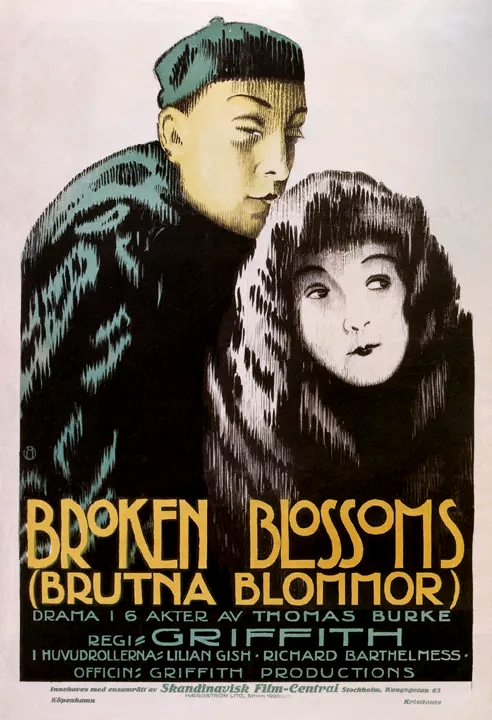
Movie Poster
PLAY FILM ▶
"Broken Blossoms" is a 1919 silent film directed by D.W. Griffith, a milestone in cinema that has left an indelible mark on the history of the medium. Based on the short story "The Chink and the Child" by Thomas Burke, the film tells the story of Lucy Burrows, played by the legendary Lillian Gish, a young girl abused by her alcoholic father, and Cheng Huan, a kind and compassionate Chinese immigrant, played by Richard Barthelmess. Set in the slums of London, the film explores themes of race, class and violence with a delicacy and depth that were unusual for the time. Gish's performance is particularly poignant, depicting Lucy's vulnerability and inner strength with a sensitivity that transcends the silence of the film. G.W. Bitzer's cinematography, with its innovative framing and expressive use of light, contributes to creating an atmosphere full of emotions. "Broken Blossoms" was the first film released by United Artists, and despite its modest budget, it was a great commercial success. The film was also selected for preservation in the Library of Congress' National Film Registry, recognizing its cultural, historical, and aesthetic significance.
Movie Poster
PLAY FILM ▶
"His Double Life" is a 1933 film that stands out for its ingenious plot and memorable performance by Lillian Gish. The story follows the vicissitudes of Priam Farrel, a renowned artist who, following a series of misunderstandings, assumes the identity of his deceased valet. This film, directed by Arthur Hopkins with directional contributions from William C. deMille, is a comedy-drama that explores themes of identity, deception, and love with a subtle touch of humor. Lillian Gish, in the role of Alice Chalice, offers a nuanced and fascinating representation, demonstrating her versatility as an actress. Her performance was praised for her ability to capture the emotional complexity of the character, making Alice a central figure in the narrative. The film, now in the public domain, remains a classic example of Pre-Code cinema and a witness to Hollywood's golden age.
"Lilian and Dorothy Gish - An Unbreakable Bond"

"Courtesy of the Media History Digital Library"
dal Periodico MOTION PICTURE NEWS (Oct 1914-Jan 1915)

POSTCARD - Cinémagazine-Edition, Paris
(personal collection)
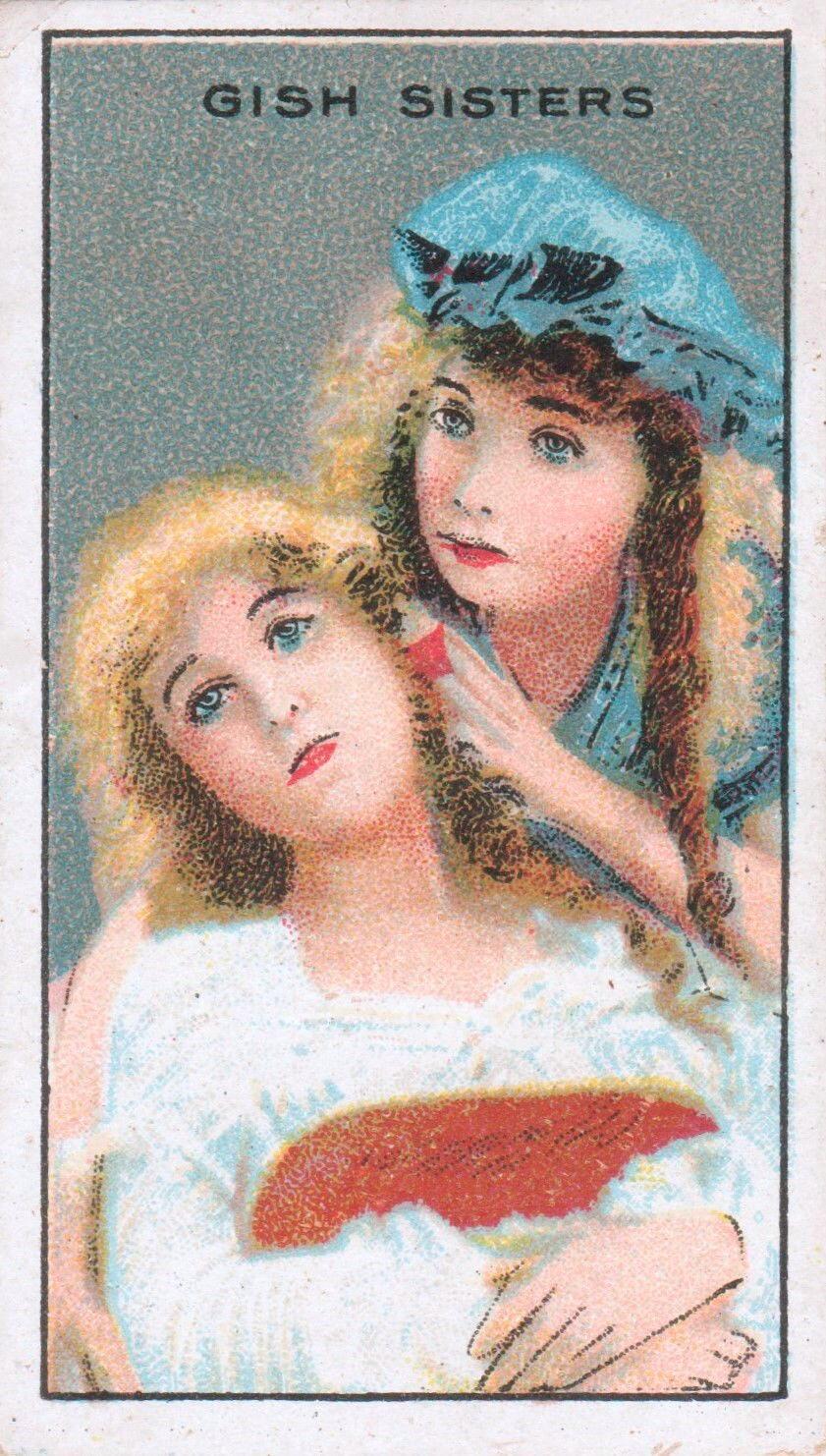
Card CINEMA STARS
The United Tobacco Cos. (South) Ltd.
SUCCESSORS to W.D. & H.O. WILLS (1922)
(personal collection)
Lilian and Dorothy Gish, two of the most iconic figures in silent cinema, shared not only blood, but also an extraordinary career that often saw them work side by side. Born in 1893 and 1898 respectively, the Gish sisters began their artistic careers at a young age, performing in plays to help the family after their parents separated.

Card no.66 of the ֍ Cinema Stars series printed by GALLAHER ltd in 1926
(personal collection)
From an early age, Dorothy showed an energy and liveliness that set her apart. While Lilian was thoughtful and serious, Dorothy was the beating heart of the family, always ready to make anyone around her smile. The two sisters began their careers together, but Dorothy soon found her way into the world of silent cinema, becoming one of the most beloved comic actresses of her time. Her ability to express emotions through mimicry and gesture made her a unique and unforgettable figure. Despite her brilliant career, Dorothy always remained humble and deeply attached to her family, especially Lilian. The two sisters shared a special bond, made up of complicity and mutual support.

Card position 4 pag. 26 FILM KŰNSTLER AUS ALLER WELT
"APPROPRIATE"
(personal collection)

